Double Knit Blanket In New Yarns
All knitting is amazing, but certain techniques, so easy with such exciting results, really do feel like magic! If you haven’t tried double knitting yet, cast on our Double Knit Blanket Bundle and begin your new life as a double knitter!
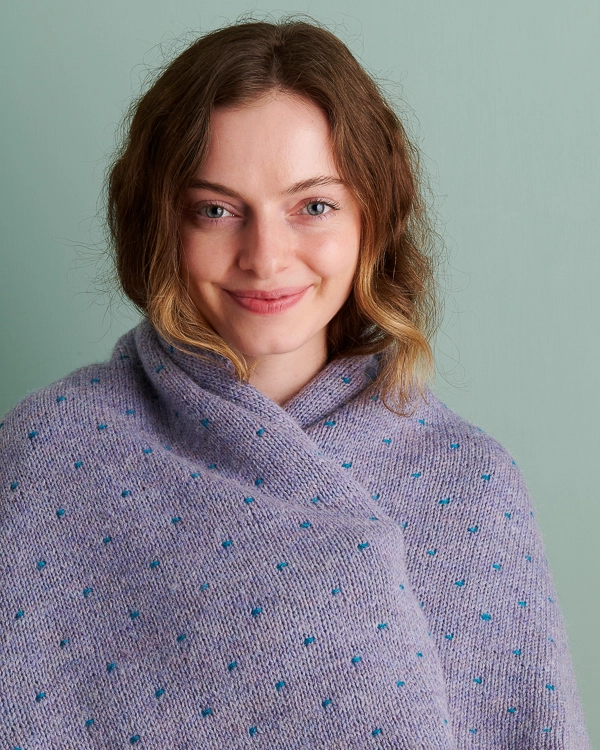
Double knitting lets you work two layers of fabric at the same time, all by just alternating knit stitches and slip stitches. Unsure? Take a peek at our tutorial (which is one of our most popular!) and prepare to have your mind blown!

You make the little dashes of color as you go, an easy step that punctuates each side with texture and beauty and also serves to hold the two layers of your blanket in place.
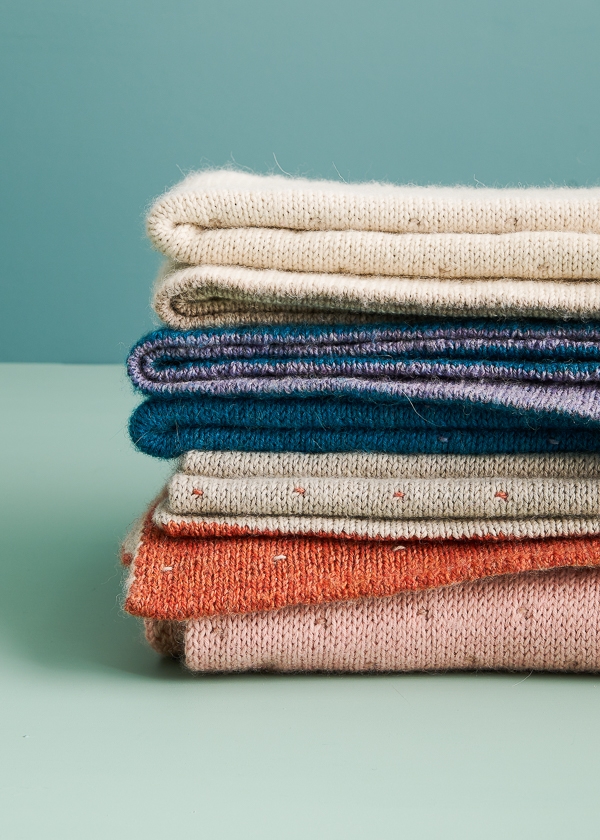
Having two layers creates the chance to bring together very different yarns to make one gorgeous whole. Good Wool and Season Alpaca each bring their own very special touch to this blanket. One hundred percent Andean highland wool, Good Wool is airy-light and bouncy, with a hearty feel and heathered beauty.

Made with the most special grade of Peruvian alpaca available (100% super baby alpaca!), Season Alpaca is amazingly soft and subtly shiny, flowing over your needles to create a velvety puddle of fabric. Earthy Good Wool and smooth-as-honey Season Alpaca, you’ll love the satisfying feel of these yarns together!

A double-thick blanket comes in handy for all things baby: chilly stroller rides (twice as warm!), belly time (so much cushion!), time with a trusty blanket (so much to explore!). Pick from nine gorgeous Double Knit Blanket Bundles and enjoy the two-sided wonder that is double knitting!
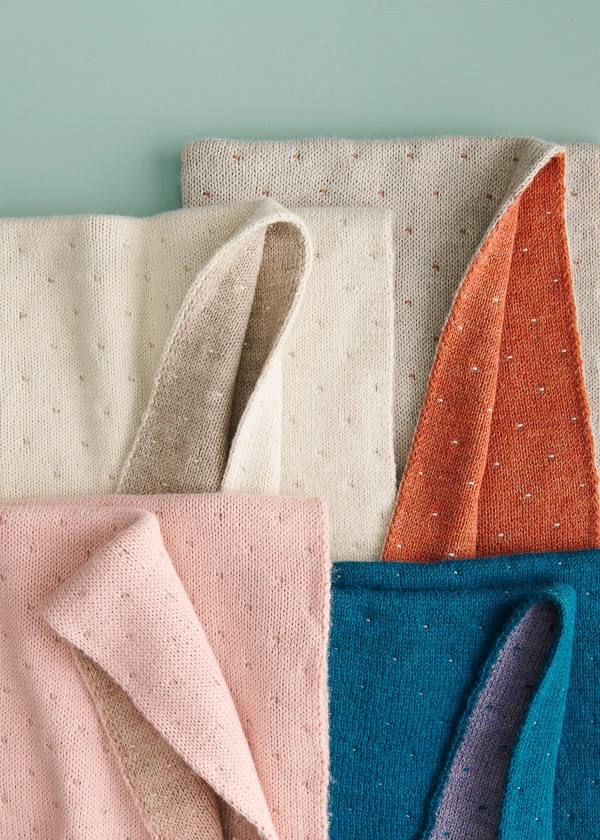
Designed by Purl Soho designer, Jake Canton. Click here to see even more of Jake’s designs!
Share your progress and connect with the community by tagging your pics with #PurlSoho, #PurlSohoBusyHands, #PurlSohoDoubleKnitBlanket, #PurlSohoGoodWool, and #PurlSohoSeasonAlpaca. We can’t wait to see what you make!
Materials
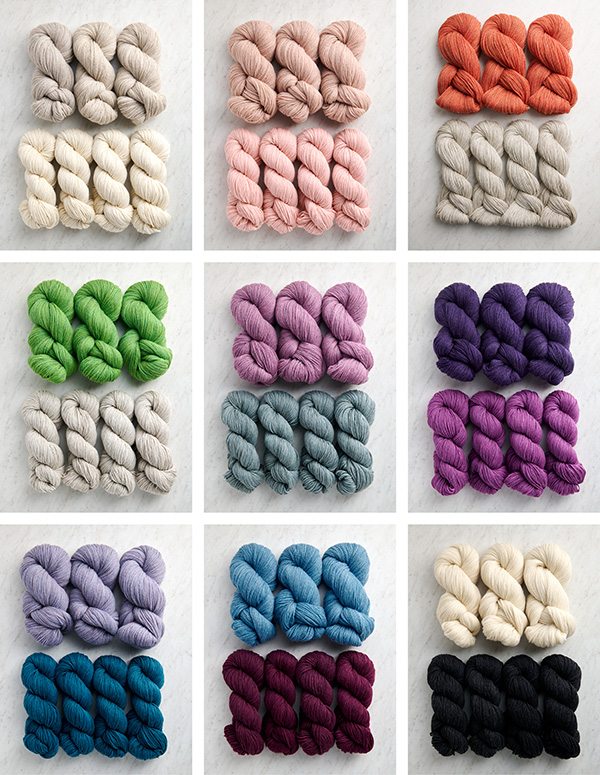
Our Double Knit Blanket Bundle comes in two sizes and contains all the yarn you’ll need to knit your own Crib (Throw) size blanket. Each one includes…
- Yarn A: 3 (5) skeins of Purl Soho’s Good Wool, 100% Andean highland wool. Each skein is 383 yards/ 100 grams; approximately 900 (1595) yards required.
- Yarn B: 4 (7) skeins of Purl Soho’s Season Alpaca, 100% super baby alpaca. Each skein is 218 yards/ 100 grams; approximately 854 (1526) yards required.
You will also need…
- US 6 (4 mm), 32-, 40-, or 47-inch circular needles
- Spare US 5 (3.75 mm) or smaller, 32-, 40-, or 47-inch circular needles
Choose from nine palettes! For our blankets, we used Periwinkle Gray + True Turquoise, Pink Dawn + Peony Pink, Winter Grass + Heirloom White, and Guava Earth + Dove Gray, and here are five more Bundle options….
Heirloom White + River Rock
Wild Heath + Winter Sage
Seaside Blue + Fresh Fig
Tree Frog + Dove Gray
Violet Night + Purple Foxglove
Another option is to choose your own combination of Good Wool + Season Alpaca… Just pick up 3 (5) skeins of Good Wool and 4 (7) skeins of Season Alpaca!
GAUGE
21 stitches and 30 rows = 4 inches in stockinette stitch, using larger needles
SIZES
Crib (Throw)
Finished Measurements: 28 x 38 (39½ x 50) inches
Sample: We knit the Crib size for all of our samples.
NOTES
STITCH MULTIPLE
To adjust the width of your project, cast on a multiple of 10 + 7 stitches, then double it. For example, to knit a swatch that is a little over 5 inches wide, you can cast on 54 stitches: 20 + 7 stitches = 27 x 2 = 54.
Just remember that, because this project is double knit, the width of your finished piece will only measure half the number of stitches you cast on. For example, for our Crib size blanket, you cast on 294 stitches, and the finished blanket measures only 28 inches across. The math for that is 294 divided by 2 = 147, then divide that by the gauge (5.25 stitches per inch), and you get 28 inches.
DOUBLE KNITTING
This blanket uses a technique called Double Knitting. You can follow the pattern as written, but if you need extra help, our step-by-step video tutorial shows you exactly how to do it!
SLIP STITCHES
Slip all slipped stitches purlwise unless otherwise indicated.
CHANGING COLORS
When changing colors, carry the old yarn up the selvage in front of the new yarn.
TURN AND SLIDE
Each row in this pattern starts with the instructions to either “Turn” or “Slide” the work:
“Turning the work” means to do what you would normally do when knitting rows with circular needles: Transfer the needle from your left hand into your right and the needle from your right hand into your left and flip the work around so the opposite side is facing you.
“Sliding the work” means to keep the same side of the work facing you and to push all the stitches to the right end of the circular needles. Without turning the work, start the new row as you normally would. You will know that you’re doing this right if the yarn you need to work the next row is magically there waiting for you!
For more help, visit our Turn + Slide Tutorial!
PATTERN
CAST ON
NOTE: For our version, we used a Long Tail Tubular Cast On (and omitted the foundation rows), but a basic Long Tail Cast On is just as beautiful (and much less complicated!)
FOR A LONG TAIL TUBULAR CAST ON…
With Yarn A and the larger needles (and beginning with a purl cast-on stitch after the slip knot), cast on 294 (414) stitches.
Do not work foundation rows. Instead, continue to Set Up section below.
FOR A LONG TAIL CAST ON…
With Yarn A and smaller spare needles, cast on 294 (414) stitches.
Switch to larger needles and continue to Set Up section below.
SET UP
Set-Up Row 1 (wrong side): Turn work (see Notes) and with Yarn A, *k1, slip 1 (see Notes) with yarn in front (wyif), repeat from * to end of row.
Set-Up Row 2 (right side): Turn work and with Yarn B, *k1, slip 1 wyif, repeat from * to end of row.
BEGIN DOUBLE KNITTING
Row 1 (right side): Slide work (see Notes) and with Yarn A, *slip 1 with yarn in back (wyib), p1, repeat from * to end of row.
Row 2 (wrong side): Turn work and with Yarn B, *slip 1 wyib, p1, repeat from * to end of row.
Row 3 (wrong side): Slide work and with Yarn A, *k1, slip 1 wyif, repeat from * to end of row.
Row 4 (right side): Turn work and with Yarn B, *k1, slip 1 wyif, repeat from * to end of row.
Repeat Rows 1–4 until piece measures approximately 1 inch, ending with Row 4.
TACK DOWN
Row 1 (right side): Slide work and with Yarn A, [slip 1 wyib, p1] 3 times, *slip 1 wyif, p1, [slip 1 wyib, p1] 9 times, repeat from * to last 8 stitches, slip 1 wyif, p1, [slip 1 wyib, p1] 3 times.
Row 2 (wrong side): Turn work and with Yarn B, [slip 1 wyib, p1] 3 times, *slip 1 wyif, p1, [slip 1 wyib, p1] 9 times, repeat from * to last 8 stitches, slip 1 wyif, p1, [slip 1 wyib, p1] 3 times.
Row 3 (wrong side): Slide work and with Yarn A, *k1, slip 1 wyif, repeat from * to end of row.
Row 4 (right side): Turn work and with Yarn B, *k1, slip 1 wyif, repeat from * to end of row.
CONTINUE DOUBLE KNITTING
Repeat Rows 1–4 of Begin Double Knitting section until piece measures approximately 1 inch from the previous tack down row, ending with Row 4.
STAGGER TACK DOWN
Row 1 (right side): Slide work and with Yarn A, [slip 1 wyib, p1] 8 times, *slip 1 wyif, p1, [slip 1 wyib, p1] 9 times, repeat from * to last 18 stitches, slip 1 wyif, p1, [slip 1 wyib, p1] 8 times.
Row 2 (wrong side): Turn work and with Yarn B, [slip 1 wyib, p1] 8 times, *slip 1 wyif, p1, [slip 1 wyib, p1] 9 times, repeat from * to last 18 stitches, slip 1 wyif, p1, [slip 1 wyib, p1] 8 times.
Row 3 (wrong side): Slide work and with Yarn A, *k1, slip 1 wyif, repeat from * to end of row.
Row 4 (right side): Turn work and with Yarn B, *k1, slip 1 wyif, repeat from * to end of row.
CONTINUE
Repeat from Row 1 of Begin Double Knitting section to Row 4 of Stagger Tack Down section until piece measures approximately 37 (49) inches from cast-on edge, ending with Row 4 of Stagger Tack Down section.
Repeat Rows 1–4 of Begin Double Knitting section for approximately 1 more inch, until piece measures approximately 38 (50) inches from cast-on edge, ending with Row 4.
Cut Yarn B.
BIND OFF
Set-Up Row 1 (right side): Slide work and with Yarn A, *k1, slip 1 wyif, repeat from * to end of row.
Set-Up Row 2 (wrong side): Turn work and with Yarn A, *k1, slip 1 wyif, repeat from * to end of row.
Alternating between needles, slip all the knit stitches onto the working circular needles and all the purl stitches onto spare circular needles.
IF YOU CAST ON WITH A LONG TAIL TUBULAR CAST ON…
Slide work and with right side facing you, use Yarn A to bind off in Kitchener Stitch.
IF YOU CAST ON WITH A LONG TAIL CAST ON…
With Yarn A and the right side facing you, bind off using a 3-Needle Bind Off.
Weave in the ends and block as desired!
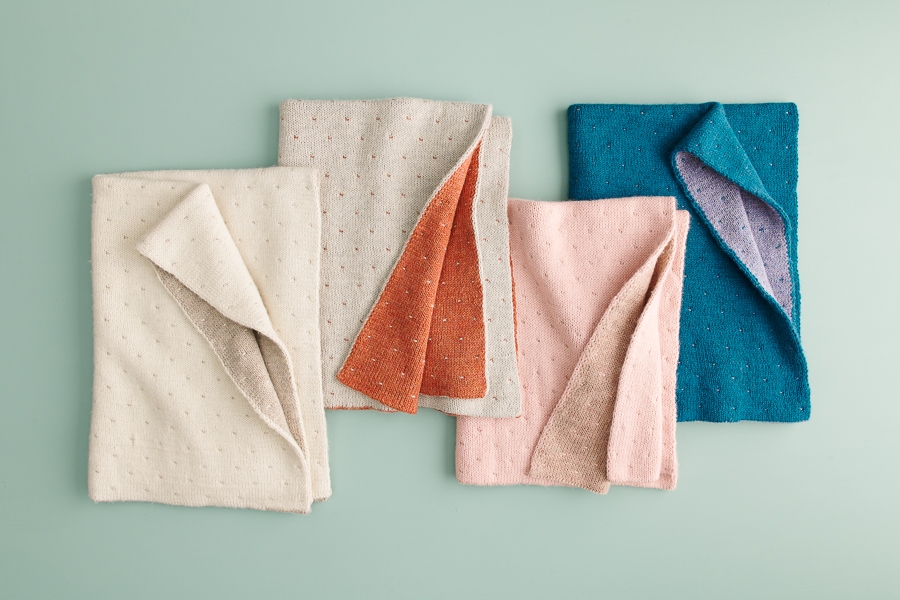

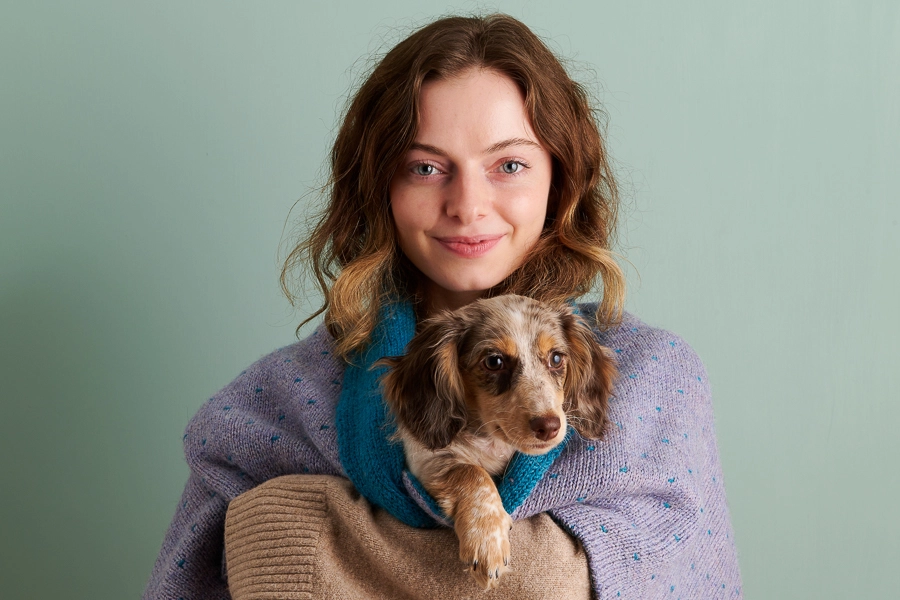

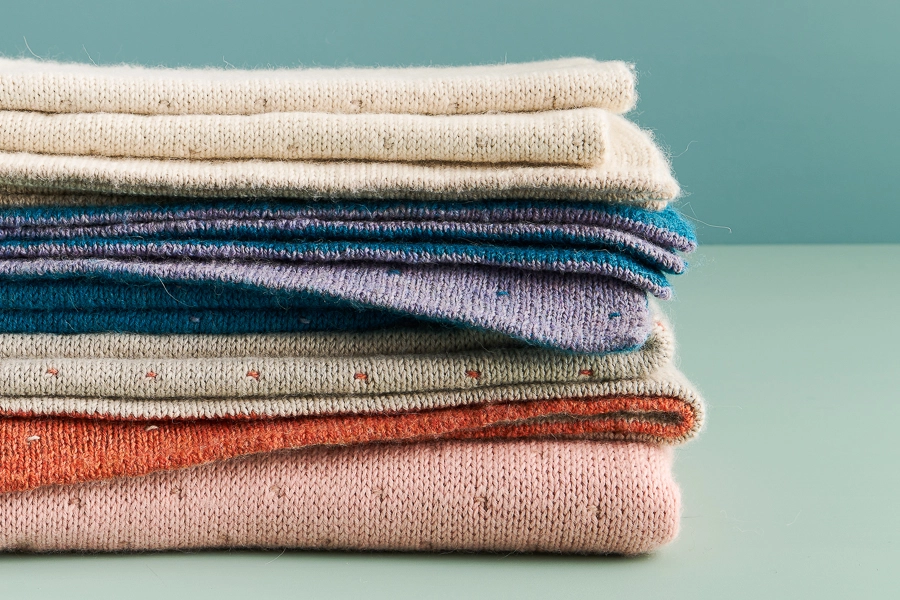
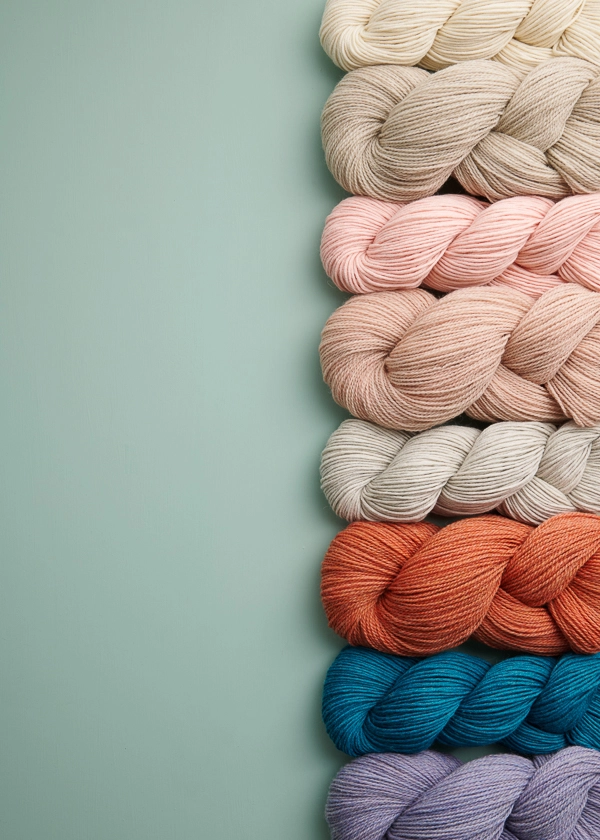
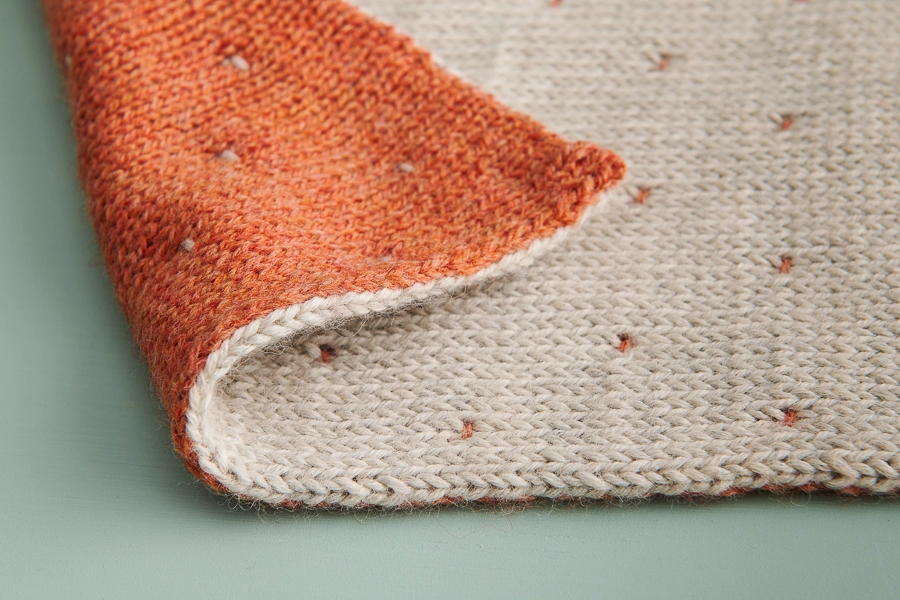
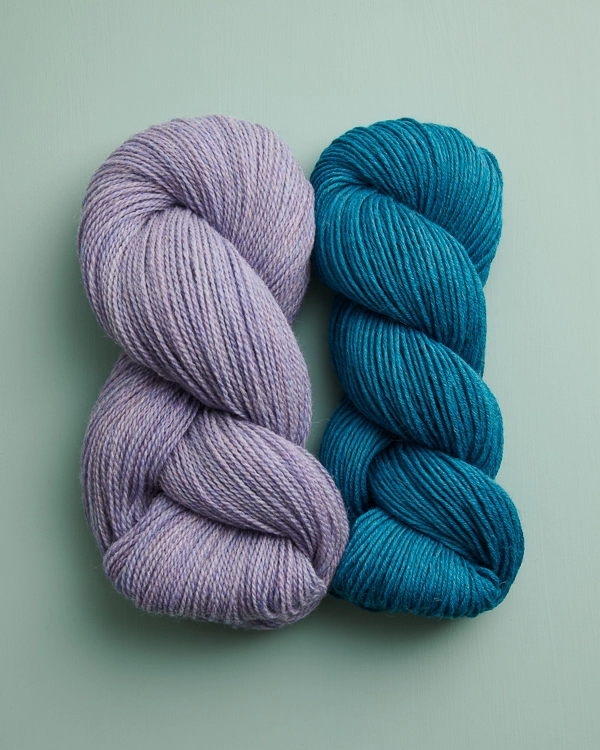
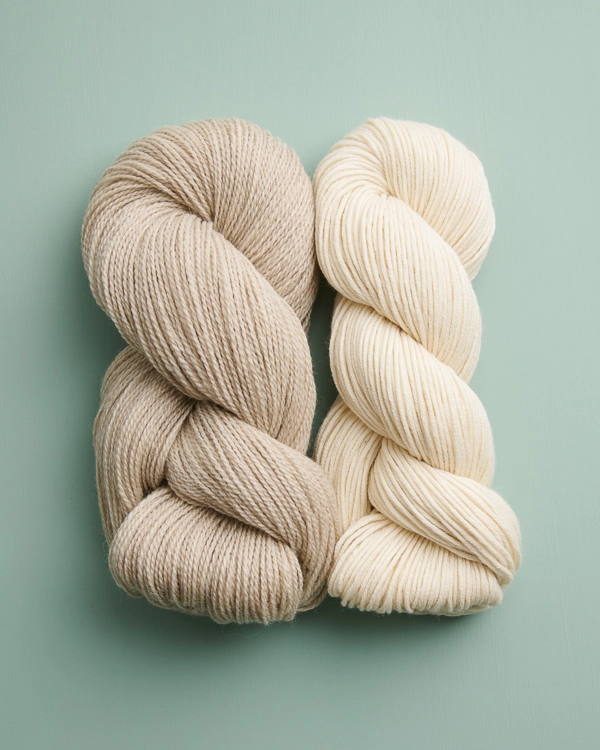
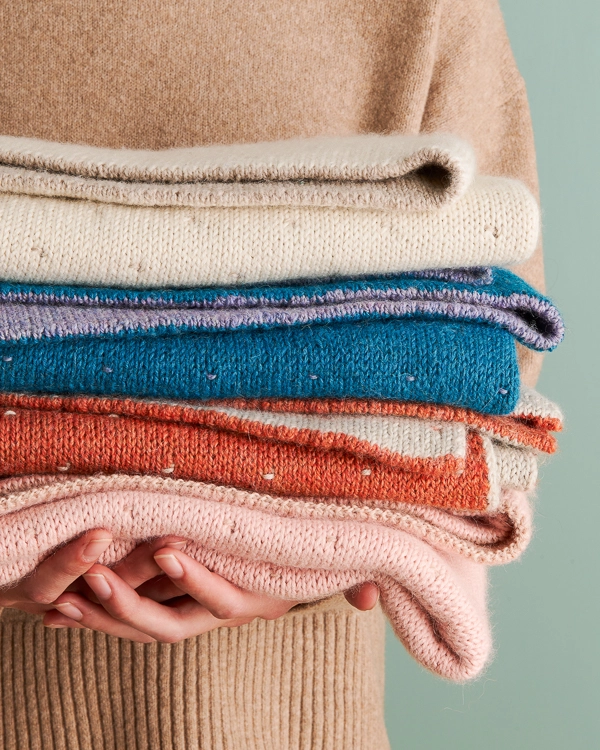
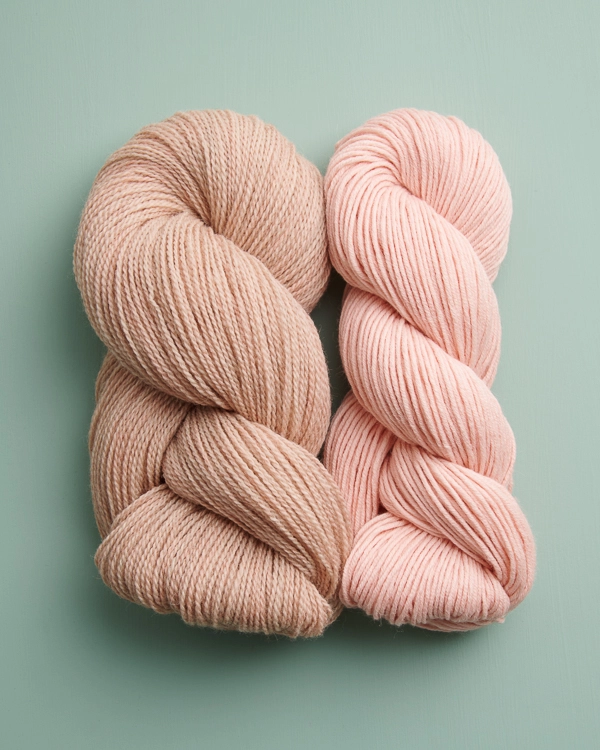

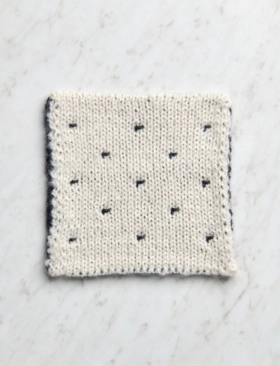
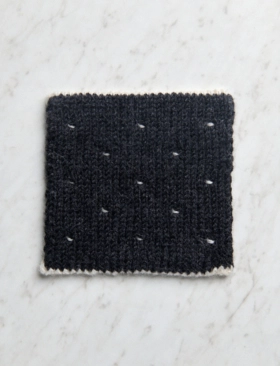
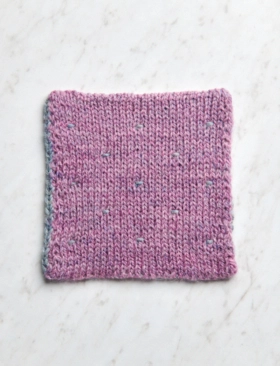
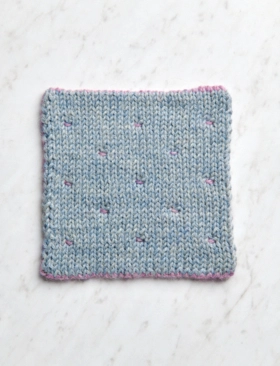
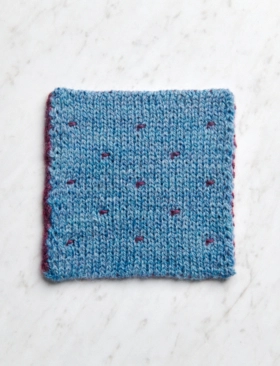
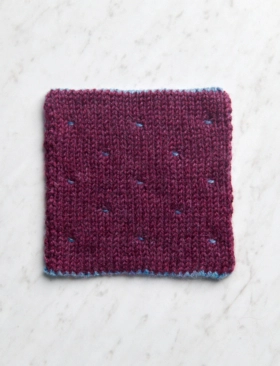
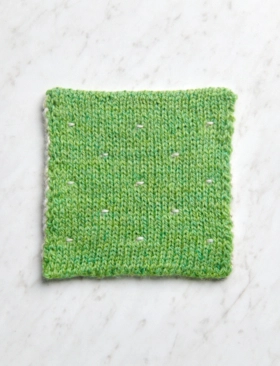
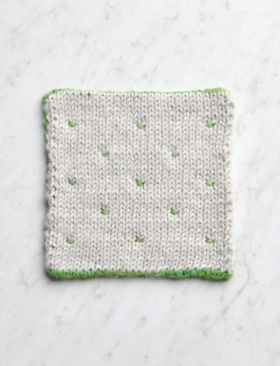
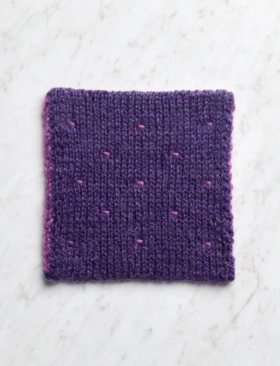
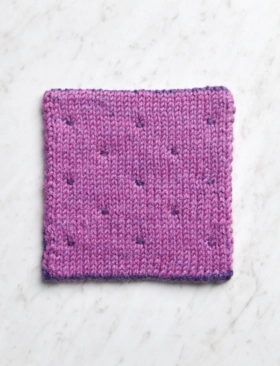


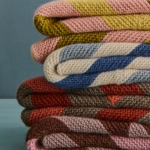
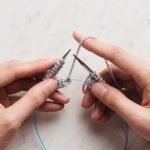
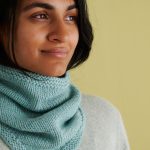

Hello, I am really excited about getting started on this project. I watched the video on the tubular cast-on. I am assuming when casting-on for this project you have both yarns in hand and are alternating for each cast-on stitch. The video for the Tubular cast on uses a P1/K1 pattern. Do I do this for the blanket? Or use all K or all P for the cast on?
Also, is it possible to use different colors than those shown in the bundles? It is just not 20% off?
Hi Lisa,
Thank you for writing in! You can definitely use colors outside of the bundles offered and both yarns are also 20% off at the time of this comment so you will get the same discount on the Good Wool and Season Alpaca if you were to purchase them separately.
To use the Long Tail Tubular Cast On for this blanket, cast on 294 stitches (or 414 for the larger size) with Yarn A and your larger needles and stop before knitting the two foundation rows on the tutorial page. Instead of working the foundation rows, switch back to your Double Knit Blanket instructions and work the Set-Up Rows instead (I inserted them below for your convenience):
Set-Up Row 1 (wrong side): Turn work (see Notes) and with Yarn A,*k1, slip 1 with yarn in front (wyif), repeat from * to end of row.
Set-Up Row 2 (right side): Turn work and with Yarn B, *k1, slip 1 wyif, repeat from * to end of row.
I hope this helps!
Happy knitting,
Gavriella
I made 2 crib size blankets with this pattern. This is my favorite knitting project since I began knitting 6 years ago. Love Love Love it.
Hi Camille,
Thank you so much for writing in and sharing that with us! We are thrilled to hear you are a long-time fan of this pattern and wish you many more happy projects!
Happy knitting,
Gavriella
I love the look of this but have never tried the technique. Are there directions for the swatches you made? Just something smaller on which to practice the stitch (and strengthen my patience!)? Thanks!
Hi Kristen,
Thanks for writing in, and swatching is a great way to get more confident with a new knitting technique! To swatch for this pattern, just cast on a smaller multiple of 10 + 7 and then double it. For example, to knit a swatch that is a little over 5 inches wide (at the gauge of the pattern), you can cast on 54 stitches: 20 + 7 stitches = 27 x 2 = 54.
I hope this helps!
All the best,
Lili
I love this pattern. Could I use this technique to knit a scarf or cowl instead? I made the eyelet cowl for one stepdaughter last year. I would like to try this for her sister. Any suggestions welcome.
Hi Cheryl,
Yes, double knitting is a wonderful technique for a scarf or cowl! While it won’t work for the Eyelet Cowl pattern because of the increases and decreases, it’s perfect for something with a solid fabric.
All the best,
Lili
I’m not crazy about alpaca wool. What would be an alternative? Both sides good wool? Or are there other options which would work?
Thx
Hi Nicky,
Thanks for writing in! I would recommend using another sportweight yarn. Good Wool is a great option, and so is Wigeon!
As always though, we recommend knitting a gauge swatch before casting on your project, especially when you are substituting yarns. You may need to size up or down your needles in order to get the correct gauge!
All the best,
Lili
I love the idea of double knitting, and of the warmth of this blanket, but how does one wash it? Both fibers require hand washing and flat drying. That could put a crib blanket out of commission for a couple of days while it dried. Any way to get around this?
Hi Margie,
Thanks for writing in! You will need to hand wash and air dry this blanket if you use Good Wool and Season Alpaca (or any other non-super wash yarns) to knit it. Animal fiber yarns are so beautiful and soft, but they do require this extra bit of care to keep the fibers that luxurious! You will definitely want to avoid putting this blanket in the washer and dryer as that will felt the yarn together and shrink the blanket considerably.
If you are interested in using a yarn that’s machine washable, then I’d recommend using a plant fiber yarn like Cotton Pure. This yarn is made from 100% organically grown cotton and holds up great in the washer and dryer!
All the best,
Lili
I love this idea- could I use the knit technique to knit a reversible hat? Is there a pattern for this?
Hi Caren,
Yes, double knitting would make an absolutely lovely hat! While we do not have a pattern for that, I bet some other designers have, so I’d recommend searching online for a pattern. We do have a reversible hat pattern (although it does not utilize the double knitting technique), and you can find it right here.
All the best,
Lili
If I wanted to make a stroller blanket how many skeins of each yarn would I need?
Hi Caren!
Can you let me know how large (in terms of length and width) you’re hoping to make your blanket? Then I can calculate exactly how many skeins you’d need!
All the best,
Lili
I am just finishing my very first double knitted crib blanket. I wish now that I had known about the little stitch placements to hold the blankets together.
Hi Carolyn,
Thank you for writing in! You could sew in little ‘tacks’ to keep your blanket together! This might be a little bit of work after the fact but I believe you might find it helpful in the long run for keeping the blanket intact. I hope this helps but please let us know if there is anything else we could help with!
Warmly,
Gavriella
Would it be possible to use Good Wool for both sides of this blanket? Or would the blanket be too heavy?
Hi Jodi,
Thanks for writing in! You can absolutely use Good Wool for both sides of the blanket, and it will actually be lighter that way. We used two different yarns in the design to explore the contrasting textures, but the pattern will work just as well with the same yarn on both sides.
All the best,
Lili
How many skeins of Cotton Pure would I need to order to make the crib/throw size?
Thank you-
Hi Janice,
Thank you for asking! To make this pattern in Cotton Pure, you will need 4 (6) skeins of color A and 4 (6) skeins of color B! I hope this helps but please let me know if you have any other questions!
Happy knitting,
Gavriella
Hi, all
The instructions for tack down and stagger tack down are throwing me off. Am I basically knitting from the asterisk to the last 8 sts (after the initial 6)? I don’t get how the 9x fits in.
Thanks very much.
Hi Chermia,
Thank you for writing in! For this section of the pattern you will want to repeat the instruction inside of the asterisks for the listed number of times. So for Row 1, you will first slide your work, and with Yarn A work [slip 1 wyib, p1] 8 times. You will then move on to work *slip 1 wyif, p1, [slip 1 wyib, p1] 9 times until you reach the last 18 stitches where you will finally work slip 1 wyif, p1 followed by [slip 1 wyib, p1] 8 times. For a more in-depth look into reading instructions written this way, we have a great tutorial that explains everything in full detail under the ASTERISKS AND BRACKETS section. I hope this helps but please let me know if you have any other questions!
Happy knitting,
Gavriella
I think we are saying the same thing. For the staggered tack down, knit from the asterisk until you get to the last 18. What I don’t get is the 9x given that I have 414 sts on the needle. I’m not getting your math.
Hi Chermia,
I think I see where the mix-up is. You will not repeat the whole ** section here 9 times but instead only the two stitches in brackets for a total of 20 stitches 9 times. So *slip 1 wyif, p1, [slip 1 wyib, p1] 9 times, repeat from * to last 18 stitches. This section will consume a total of 380 stitches which works out perfectly with the first 16 sts and the last 18 sts. Please let me know if this helps clarify the instructions. We would also be happy to discuss further over one of our free 1 on 1 sessions as well!
It makes perfect sense now! Thank you so much for your patience.
Separately, this a great pattern. I can myself making multiple color versions. Thanks again.
You are very welcome! We are always happy to help and we are glad we were able to get you back on track!
Happy making,
Gavriella
Ciao,
bellissima questa coperta anche se non ho mai lavorato con questa tecnica.
ho visionato il tutorial e ho provato a fare un piccolo campione ma non sono riuscita.
ho avviato le maglie con avvio a coda lunga (NO TUBOLARE)
e poi ho fatto i 2 giri di preparazione. forse non dovevo farli?
Guardando il tutorial avevo capito che dovevo ripetere solo i ferri dal nr. 1 al nr. 4 ma seguendo le istruzioni ho letto che devo lavorare così solo fino a quando il lavoro misura 1 pollice… non ho capito cosa vuol dire!
grazie se potrai aiutarmi
Hi Stefania,
That is a great question! If using the long tail cast on, you will want to work the two SET UP rows, the BEGIN DOUBLE KNITTING rows 1-4 for 1 inch and then begin your TACK DOWN section. After the tack down section is complete, you will resume BEGIN DOUBLE KNITTING rows 1-4 of until it is time to complete the next tack down. I hope this helps clarify but please let us know if you have any other questions!
Happy knitting,
Gavriella
ciao Gavriella, scusa se scrivo ancora!
cosa vuol dire la sezione
ABBANDONARE ?
nella tua risposta non mi hai detto di questa parte.
Probabilmente non ho capito !
inoltre, la seguente frase:
Riga 4 (lato destro): girare il lavoro e con il filo B, *1 mr, passare 1 maglia, ripetere da * fino alla fine della riga.
😉 1mr significa 1 maglia a rovescio?
ma voi fate anche delle videolezioni a pagamento?
grazie per un tuo riscontro.
Stefania
Hi Stefania,
For row 4, you will work as follows: Turn work and with Yarn B, *knit one, slip one with yarn in front, repeat from * to end of row. I hope this helps but please feel free to email us at customerservice@purlsoho.com where we’d be more than happy to take a look at your work or further explain any of the techniques used in the pattern!
Happy knitting,
Gavriella